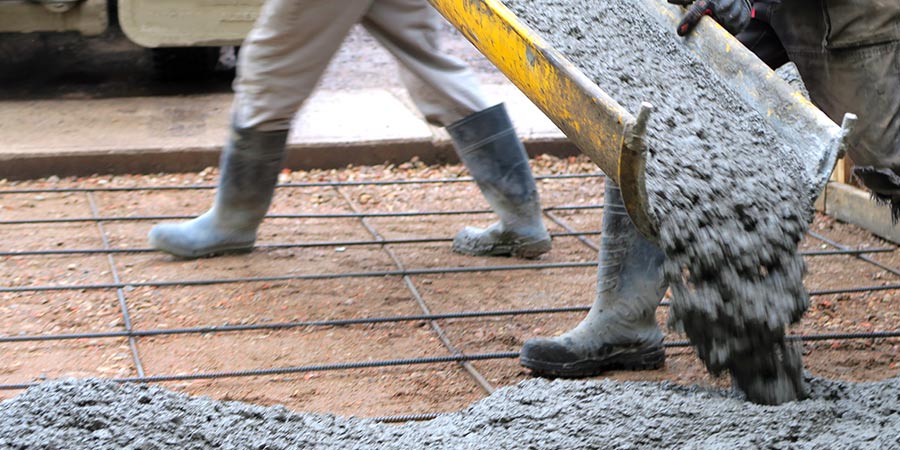
There’s been a lot of talk about the benefits of high flow concrete, but how do you know when to use it and when conventional concrete is sufficient? First, let’s define the different types of concrete.
- Conventional concrete: Normal slump concrete has been used successfully for decades, but can be difficult and labor intensive to place for the contractor and more time-consuming for the ready mix concrete producer.
- Self-consolidating concrete: This is a specifically designed mix, typically containing higher cementitious contents and smaller size coarse aggregates. Self-consolidating concrete mixes are typically more expensive, but require less labor than conventional concrete to place. Self-consolidating concrete’s moisture tolerance can be sensitive, so you need to have sufficient quality assurance staff in the field to ensure the right consistency.
- Control flow concrete: This category of concrete bridges the gap between conventional concrete and self-consolidating concrete. Control flow concrete uses conventional mix designs, larger coarse aggregates and CONCERA® water-reducing concrete admixture. Therefore material costs are lower than self-consolidating concrete.
Let’s look at the characteristics of each type of concrete…
Many factors need to be considered with choosing a specific concrete category. First, consider where the concrete will be used. For example, control flow concrete is ideal for most slab on grade and formed concrete applications, while self-consolidating concrete is advantageous for use in highly reinforced and very difficult to cast applications.
Additionally, when considering the price of each type of concrete, you’ll want to take into account the cost of the materials, as well as the cost of labor in the region. Since higher flowing concrete, like control flow concrete and self-consolidating concrete, significantly reduce the amount of labor involved with placing concrete, their benefits are even greater when they’re used in cities with high labor rates.
Pros and Cons of Different Concrete Types
Learn more about creating control flow concrete with CONCERA® admixtures
Related articles
April 30, 2018
Reducing your carbon footprint with admixtures
Cement is the world’s most prevalent man made material, with approximately 0.56 tons produced annually for every person on earth. It binds concrete, which is used to construct much of the built enviro...
READ MOREDecember 11, 2017
Is concrete a sustainable building material?
When we think about concrete, environmental sustainability is not always the first thing that comes to mind. But this popular building material actually provides a number of significant environmental ...
READ MORESeptember 20, 2017
Fly ash yields benefits for ready mix producers
/ concrete / ready-mix It isn’t often that you can equate coal-related products with energy efficiency, but when it comes to fly ash, it actually does help. Th...
READ MOREDecember 04, 2017
Achieving high flow with reinforced concrete
Concrete producers will often add synthetic macro fibers into their concrete to improve its toughness and durability. This is much easier than physically placing welded wire mesh, which can be labor-i...
READ MORESeptember 25, 2017
Mitigating risks in concrete production
/ concrete / ready-mix We rely on concrete to support demanding needs in virtually all new construction. Small variations in the coarse or fine aggregates in t...
READ MORETags
- CONCERA
- Concrete
- Engineer
- Structural Solutions


